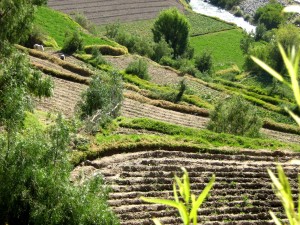As the world population and our need for energy increases, so does climate change and the push for renewable resources. Feed-in tariffs (FIT), aka renewable energy payments (REPs), could be an effective way to get people to invest in renewable energy options. FITs currently operate in nearly 50 countries and areas globally. They offer fixed long term contracts to companies, householders or anyone producing electricity to a grid through renewable energy. The REPs are set based on the price of technologies and the availability of resources, rather than having the same payment for every resource. Therefore, the producer will receive more money for supplying energy such as, solar, wind or geothermal, rather than coal or oil. REPs also provide incentive to update technologies by lowering the payment if the producer has not updated their technology in a certain period of time. Updated technologies create efficient systems.
FITs are another great way to create jobs. For example, the province of Ontario is pushing toward an FIT system estimated to establish around 50 000 jobs within three years. Success stories of current FIT systems can be used to measure the benefits. Germany’s FIT system, for example, allowed smaller companies or people to sell electricity to the grid instead of only large companies. Currently, Germany’s system employs around 280 000 jobs and saved 115 million tones of CO2 emissions in 2008 and saved 4.3 billion euros in energy imports in 2007. The FIT system is funded by a measly 3.10 euros a month per household.
FITs can also be implemented in developing nations if properly adapted to the conditions -of the human and environmental aspects- of the area. The biggest challenge is to find funding to start the project. FITs in developing nations could be funded through the national budget or international donors; however, keeping the project money separate from government money is crucial, to save the project money from any government conflict. Privately owned organizations, such as independent power producers (IPPs) or rural energy service companies (RESCOs) can still get funding from the government and act as the middle man between villagers and the government. Once the funding and organizations are in place, village mini-grids (ex. wind or solar) can be set up to supply cheaper energy to the village without having to transport the electricity. The people of the village can become both the producer and the consumer, which could give them much needed profit, or even a job in the installation or maintenance process. The consumer/producer can use the initial profit to pay off the price of installation, and then pocket the money once it’s paid off. This can give people with low income an inward flow of money and essentially benefit the developing economy as well.
I believe that FITs are successful in the fact that they create economic incentive. For the most part, money drives the rate at which renewable energy systems are put in place; therefore, if people can gain from switching to RE they will. The implementation of FITs has grown over the years and hopefully continues to gain more users from towns, developing areas or cities.
Bibliography:
Dr. Kola Odeku, Professor Edson Meyer, Professor Mireku, Professor JLH Letsoalo. Implementing a Renewable Energy Feed-in Tariff in South Africa. Source: Sustainable Development Law & Policy. January 1, 2011. Ebscohost. Web October 19, 2013. Retrieved from http://web.ebscohost.com/ehost/pdfviewer/pdfviewer?sid=2be8e3cb-0905-4f53-9877-a2be87e994cb%40sessionmgr113&vid=2&hid=117
Girardet, H, Mendonca, M. A Renewable World: Energy, Ecology, Equality. Published by Green Books Ltd. 2009. Printed by Cambrian Printers.
Grinlinton, D, Paddock, L. The Role of Feed-in Tariffs in Supporting the Expansion of Solar Energy Production. Ebscohost. Source: University of Toledo Law Review. June 1, 2010. Web October 18, 2013. Retrieved from http://web.ebscohost.com/ehost/pdfviewer/pdfviewer?vid=3&sid=466de43c-4dba-4027-9897-a45397968fc8%40sessionmgr111&hid=117
Shin, H. Hashim, H. Integrated Electricity Planning Comprise Renewable Energy and Feed-in Tariff. Source: American Journal of Engineering & Applied Sciences. January 1, 2012. Ebscohost. Web October 18, 2013. Retrieved from http://web.ebscohost.com/ehost/pdfviewer/pdfviewer?sid=75636460-7cb5-442b-bbc2-5b88d0460abf%40sessionmgr113&vid=2&hid=117










